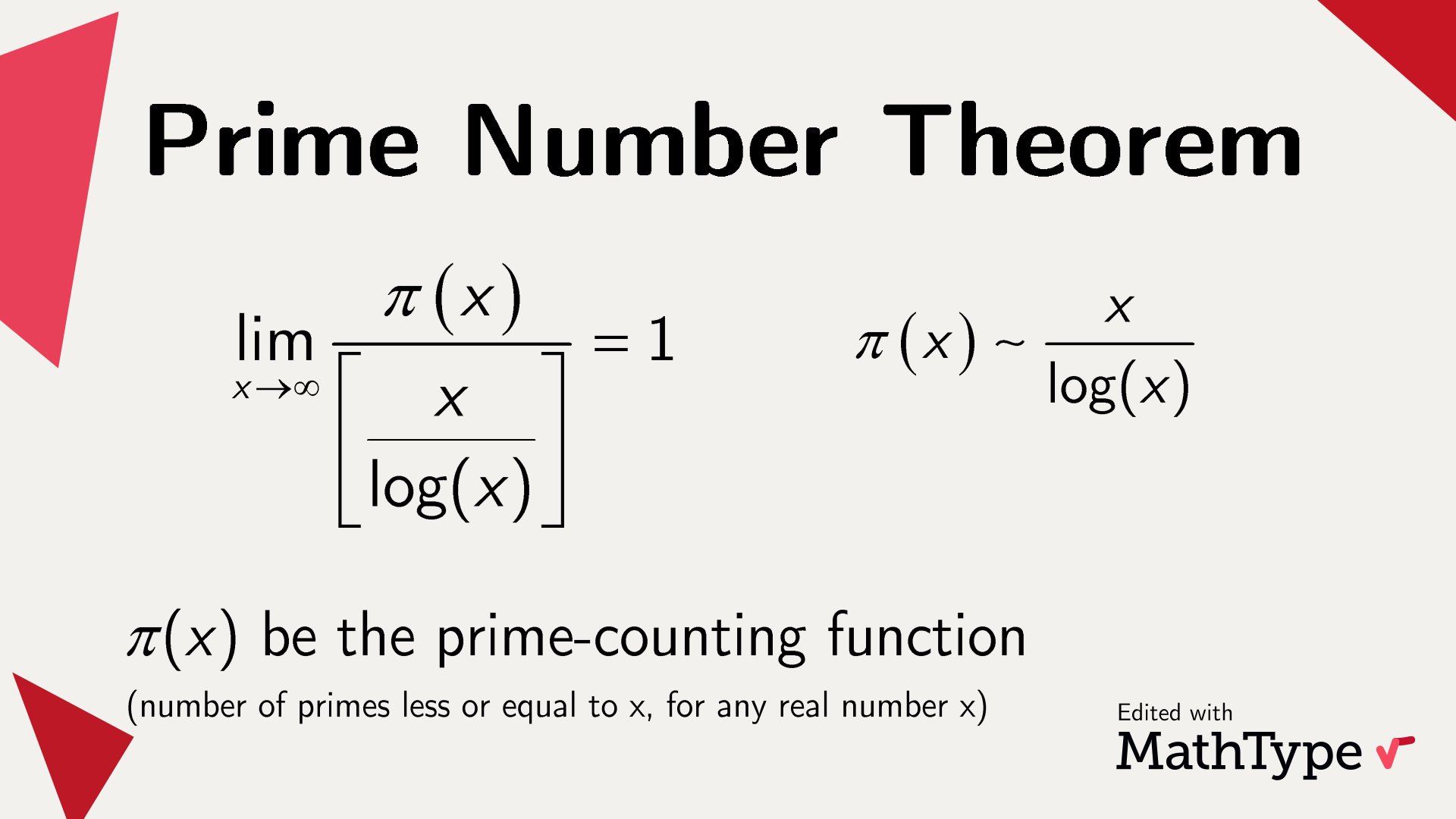(+)분류 : 가져온 문서/오메가

Prime number theorem
\\lim_{x\\to \\infty}\\frac{\\pi(x)\\ln{x}}{x}=1
이 된다는 정리다. 여기서 \\pi(x)는 소수 계량 함수이다. 이 정리는 소수들의 분포를 잘 알려준다.
1. 오차항의 표현 ✎ ⊖
x가 무한대로 가면 다음이 성립한다.
- \\pi(x)=\\frac{x}{\\ln{x}}+O\\left(\\frac{x}{(\\ln{x})^2}\\right)
- \\left|\\pi(x)-\\frac{x}{\\ln{x}}\\right|\\gg \\frac{x}{(\\ln{x})^2}
- \\Lambda(n):=\\begin{cases}\\ln{p} & \\text{if}\\;n=p^k \\text{ for some positive integer}\\;k \\\\ 0 & \\text{otherwise}\\end{cases}
- \\psi(x):=\\sum_{n\\le x}\\Lambda(n)
- \\psi(x)=x+O\\left(xe^{-c\\sqrt{\\ln{x}}}\\right)
- \\psi(x)=x+O_{\\varepsilon}(x^{\\frac{1}{2}+\\epsilon})
2. 동치인 표현들 ✎ ⊖
2.1. 약간의 식 변형 ✎ ⊖
- \\lim_{x \\to \\infty}\\frac{\\pi(x)\\log \\pi(x)}{x}=1
- \\lim_{n \\to \\infty}\\frac{p_n}{n \\log n}=1
2.2. 체비셰프 함수 ✎ ⊖
- \\lim_{x \\to \\infty} \\frac{\\vartheta(x)}{x}=1
- \\lim_{x \\to \\infty} \\frac{\\psi(x)}{x}=1
2.3. 뫼비우스 뮤 함수 ✎ ⊖
- \\sum_{n=1}^{\\infty}\\frac{\\mu(n)}{n}=0
2.4. 메르텐스 함수 ✎ ⊖
- \\lim_{x \\to \\infty} \\frac{M(x)}{x}=0
3. 참고 문헌 ✎ ⊖
- Apostol, Tom M. (1976), Introduction to analytic number theory, Undergraduate Texts in Mathematics, New York-Heidelberg: Springer-Verlag, ISBN 978-0-387-90163-3.
이 문서의 내용 중 전체 또는 일부는 오메가에서 가져왔으며 CC BY-NC-SA 3.0에 따라 이용할 수 있습니다.

